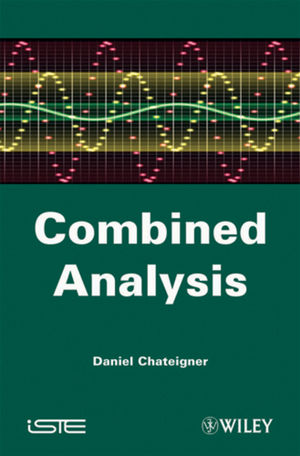Combined AnalysisISBN: 978-1-84821-198-8
Hardcover
496 pages
July 2010, Wiley-ISTE
 |
||||||
Introduction xiii
Acknowledgements xvii
Chapter 1. Some Basic Notions About Powder Diffraction 1
1.1. Crystallite, grain, polycrystal and powder 1
1.2. Bragg’s law and harmonic reflections 2
1.3. Geometric conditions of diffraction, Ewald sphere 4
1.4. Imperfect powders 5
1.5. Main diffraction line profile components 6
1.6. Peak profile parameters 11
1.7. Modeling of the diffraction peaks 11
1.8. Experimental geometry 22
1.9. Intensity calibration (flat-field) 26
1.10. Standard samples 32
1.11. Probed thickness (penetration depth) 36
Chapter 2. Structure Refinement by Diffraction Profile Adjustment (Rietveld Method) 41
2.1. Principle of the Rietveld method 41
2.2. Rietveld-based codes 43
2.3. Parameter modeling 44
2.4. Crystal structure databases 71
2.5. Reliability factors in profile refinements 71
2.6. Parameter exactness 75
2.7. The Le Bail method 75
2.8. Refinement procedures 76
2.9. Refinement strategy 81
2.10. Structural determination by diffraction 82
Chapter 3. Automatic Indexing of Powder Diagrams 91
3.1. Principle 91
3.2. Dichotomy approach 92
3.3. Criterions for quality 93
Chapter 4. Quantitative Texture Analysis 95
4.1. Classic texture analysis 95
4.2. Orientation distribution (OD) or orientation distribution function (ODF)131
4.3. Distribution density and normalization 140
4.4. Direct and normalized pole figures 140
4.5. Reduced pole figures 143
4.6. Fundamental equation of quantitative texture analysis 143
4.7. Resolution of the fundamental equation 150
4.8. OD refinement reliability estimators 161
4.9. Inverse pole figures 168
4.10. Texture strength factors 170
4.11. Texture programs 173
4.12. Limits of the classic texture analysis 176
4.13. Magnetic quantitative texture analysis (MQTA)178
4.14. Reciprocal space mapping (RSM)189
Chapter 5. Quantitative Microstructure Analysis 191
5.1. Introduction 191
5.2. Microstructure modeling (classic) 192
5.3. Bertaut-Warren-Averbach approach (Fourier analysis) 197
5.4. Anisotropic broadening: the Popa approach 204
5.5. Stacking and twin faults 212
5.6. Dislocations 214
5.7. Crystallite size distributions 217
5.8. Rietveld approach 219
Chapter 6. Quantitative Phase Analysis 221
6.1. Standardized experiments 221
6.2. Polycrystalline samples 221
6.3. Amorphous-crystalline aggregates 223
6.4. Detection Limit 225
Chapter 7. Residual Strain-Stress Analysis 227
7.1. Strain definitions 227
7.2. ?Ï33 strain determination 229
7.3. Complete strain tensor determination 230
7.4. Textured samples 232
Chapter 8. X-Ray Reflectivity 235
8.1. Introduction 235
8.2. X-rays and neutrons refractive index 238
8.3. The critical angle of reflection 240
8.4. Fresnel formalism (specular reflectivity) 241
8.5. Surface roughness 246
8.6. Matrix formalism (specular reflectivity) 250
8.7. Born approximation 251
8.8. Electron density profile 251
8.9. Multilayer reflectivity curves 252
8.10. Instrumental corrections 253
Chapter 9. Combined Structure-Texture-Microstructure-Stress-Phase Reflectivity Analysis 257
9.1. Initial queries 257
9.2. Implementation 261
9.3. Experimental set-up 264
9.4. Instrument calibration 264
9.5. Refinement strategy 269
9.6. Examples 272
Chapter 10. Macroscopic Anisotropic Properties 363
10.1. Aniso- and isotropic samples and properties 363
10.2. Macroscopic/microscopic properties 364
Bibliography 441
Glossary 483
Abbreviations 487
Mathematical Operators 489
Index 491



